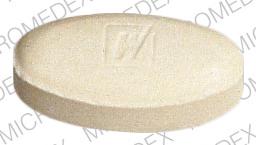NegGram Dosage
Generic name: nalidixic acid
Dosage form: tablet
Drug classes: Quinolones and fluoroquinolones, Urinary anti-infectives
Medically reviewed by Drugs.com. Last updated on Apr 14, 2025.
Antacids containing calcium, magnesium, or aluminum; sucralfate; divalent or trivalent cations such as iron; multivitamins containing zinc; or Videx® (Didanosine), chewable/buffered tablets of the pediatric powder for oral solution should not be taken within the two-hour period before or within the two-hour period after taking nalidixic acid.
Adults
The recommended dosage for initial therapy in adults is 1 g administered four times daily for one or two weeks (total daily dose, 4 g). For prolonged therapy, the total daily dose may be reduced to 2 g after the initial treatment period. Underdosage during initial treatment may predispose to emergence of bacterial resistance.
Renal Insufficiency
The normal dosage of nalidixic acid may be employed in patients with plasma creatinine of less than 300 µmol/L (creatinine clearance more than 20 mL/minute). Dosage should be halved in patients with plasma creatinine of more than 300 µmol/L (creatinine clearance 20 mL/minute or less).
Pediatric Patients
Until further experience is gained, NegGram should not be administered to infants younger than three months. Dosage in pediatric patients 12 years of age and under should be calculated on the basis of body weight. The recommended total daily dosage for initial therapy is 25 mg/lb/day (55 mg/kg/day), administered in four equally divided doses. For prolonged therapy, the total daily dose may be reduced to 15 mg/lb/day (33 mg/kg/day). NegGram Caplets of 250 mg may be used.
More about NegGram (nalidixic acid)
- Check interactions
- Compare alternatives
- Reviews (3)
- Drug images
- Side effects
- During pregnancy
- Drug class: quinolones and fluoroquinolones
- Breastfeeding
Professional resources
Related treatment guides
See also:
Further information
Always consult your healthcare provider to ensure the information displayed on this page applies to your personal circumstances.


